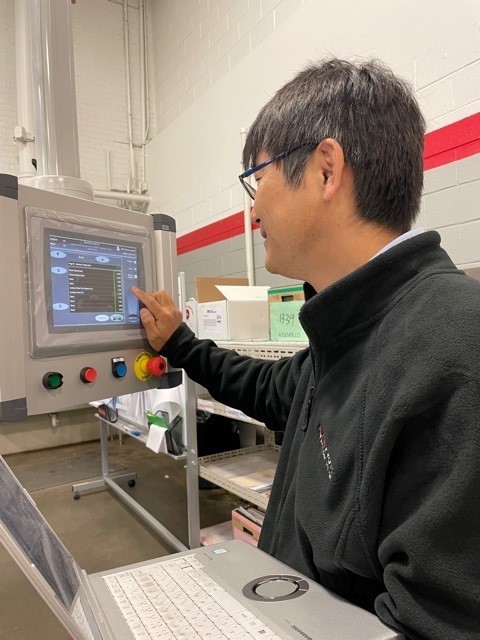PMI Kyoto prides itself on its collaboration with its headquarters in Japan to fuse robotics and mechanics in the packaging industry. We decided to consult one of our company’s veteran control engineers, Mr. Shigeki Tasaka, on the matter.
M: Why are PMI Kyoto’s machine controls specifically catered to packaging machinery, and what makes this such a necessity?
S: Around 35 years ago, before robots were ever a part of the packaging industry, our headquarters Kyoto Seisakusho (KSS) thought that it would be a good idea to use robots to make our machines more efficient. At that time, robots were predominantly being used in the automotive industry, but we still believed that there was an opportunity to integrate them into our machines. We talked to some vendors and discovered that while these robots excelled in precision, they were also very slow—far too slow to keep up with the rigorous pace of the packaging industry, so we had to give up on the idea of simply purchasing robots from vendors. Instead, we decided that we would begin making our own robots.
But that was not an easy task. We learned very quickly that not only did we have to manufacture the robot, but we also had to develop a controller that could handle a large influx of product while neatly lining it up and preparing it for packaging. We realized that not only did the controller have to control the robot, but also the collation of the products and how they ended up in the carton – essentially, the entire machine! Honestly, it was quite difficult (laughs).
By overcoming these hurdles, we were able to succeed in far more than simply more efficient packaging. Packaging became much easier, and we were able to take on more specialized projects because we had become a robotics manufacturer, not simply a packaging company that could integrate robots into their machines. We became capable of doing more than ever before.
M: When using a robot, does PMI Kyoto use a robotics company’s robot and controller? Why or why not?
S: I have heard that other companies do use controllers provided by other vendors; however, PMI Kyoto never does this. Like I touched on above, when it comes to robots in the packaging industry, the controllers cannot simply control the robot; they must control every aspect of the machine. Since our headquarters manufactures the robots for our machines, we can be sure that the controllers that go along with them have the ability to handle the entire system, not just the robot. Because of that development, we have been able to develop a plethora of methods for a variety of different machine types.
M: There are many kinds of platform controllers, such as AB, Siemans, and Mitsubishi. Even though they all have their differences, you have managed to master all of them! How were you able to do this? How do you go about handling the program?
S: Since the platform used by the machine is decided entirely by the customer, I had to get used to the different features of each very quickly. Since I know what platform I will be working with right away, I start off by asking myself, “What type of movement is best for this machine?” And from there I begin to write the program. I have an abundance of experience in program writing for packaging machines, so I am confident that I can design the best possible program regardless of which platform controller the customer wants to use.
M: What do you think of the fusion of robotic controllers and mechanics in the packaging industry? What is your opinion on the optimization of this technology?
S: To be honest, this question is a bit difficult to answer. The history of mechanical engineering in the packaging is extensive and has made many improvements; however, mechanical engineering is currently improving at a much slower rate than normal. Robotics and control technology, on the other hand, is booming and continuing to rapidly develop. I believe that fusing the two can make manufacturing even better machines a reality.
